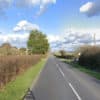Flooding, sewage and housing numbers are the latest areas of the Isle of Wight’s major planning strategy to come under the spotlight.
Following the recent weather events which have seen flooding, an increase in rainfall and sewer discharges, questions have been asked about continuing with the draft Island Planning Strategy.
453 new homes each year
The strategy sets out the Island’s housing and planning targets and policies for the next 15 years — including that 453 new homes should be built each year, many on already proposed sites.
This varies from the 730 per year the Government set as a target.
Requirements of new developments to be strengthened
However, Isle of Wight council officers assured a meeting of the authority’s neighbourhoods and scrutiny committee last week it would strengthen the requirements of new developments around those issues.
They include separating foul and surface water connections, which together overwhelm the sewer system leading to discharges.
Fuller: Working with Southern Water to make future housing more resilient
Councillor Paul Fuller, the planning cabinet member, said the strategy was to ensure the council had policies which could challenge planning applications.
He said,
“We have listened to residents and we have been working with Southern Water to make future housing more resilient, how we can improve things and reduce the amount of sewage going into our coast.”
Housing targets
Questions were also asked about whether building 453 homes a year on the Island was realistic in the current economic climate.
Officers said a range of factors had been considered to come up with the 453 figures, including previous housing delivery rates and economic cycles over the next 15 years but did say there was also an element of “crystal ball gazing” used.
Councillor Fuller said without the plan, the authority would have to use the government’s target figure of 730 new homes a year and there had been no legislative changes to reduce that number.
Seven recommended changes
The committee proposed seven recommended changes be made to the planning strategy, including:
- Treating the Military Road as an essential route
- Amending the plan to take into account the recent flooding and reviewing issues around sewage capacity
- Adding modular housing
- Extending buffer zones around ancient woodlands from 15m to 50m
Rejected recommendations
Other recommendations put forward by Councillors Chris Jarman, regarding development in the West Wight, and Peter Spink, on the number of houses set to be built. These recommendations were not taken by the committee.
Councillor Spink also questioned whether one part of the strategy, which he thought had changed, would remove the right of the planning committee to decide whether or not an allocated housing site is suitable for development.
Officers said that part of the strategy had not changed and the sites would still have to go through the usual planning application processes before development could be approved.
Cabinet approval
The committee’s recommendations will be sent to the council’s cabinet in the new year, for approval.
Cabinet will decide whether to recommend the draft planning strategy to full council, where it will seek approval and publication to the Secretary of State.
Officers say the current version of the plan is sound and has taken into account the “significant levels” of public consultation already undertaken.
This article is from the BBC’s LDRS (Local Democracy Reporter Service) scheme, which News OnTheWight is taking part in. Some alterations and additions may have been made by OnTheWight. Ed





